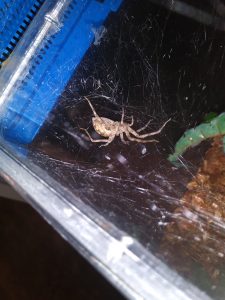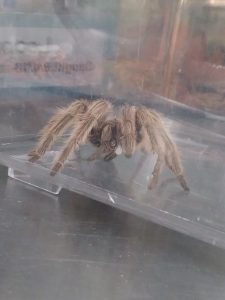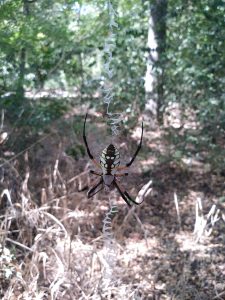
River Legacy Park is home to hundreds of spider species. One very common spider species is the dark fishing spider (Dolomedes tenebrosus). This spider is primarily found on trees and it is most often seen in the month of May, although it can also be spotted all the way until September. Despite the fact that it is called a “fishing spider,” it does not live near water or fish. It is in fact, the most terrestrial, of the fishing spiders. It is quite big: females can measure anywhere from 15 to 26 millimeters whereas the males tend to be smaller, from 7 to 13 millimeters. The female produces egg sacs that can contain up to 1,000 baby spiders inside!
Spiders serve many purposes in the ecosystem at River Legacy, mainly prey control. It is estimated that all of the world’s spiders consume about 400 to 800 tons of prey each year! Spiders are also a great group of organisms for learning a wide array of concepts: predation, invertebrate biology, how venom works, the amazing design abilities of the animal kingdom, etc.. Learning about spiders can help in reducing arachnophobia.
During our Spectacular Spiders Summer Class, students will learn all about spiders and why they are cool and interesting. Space is filling up quickly though so visit our website to sign up and learn more information. We hope to see your child there!


